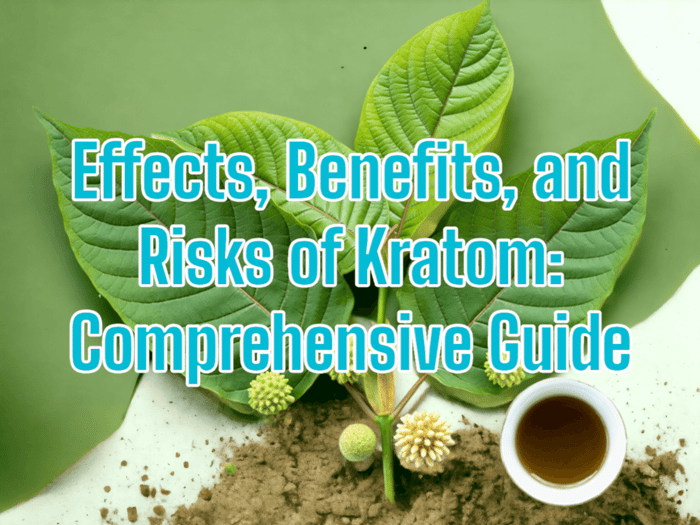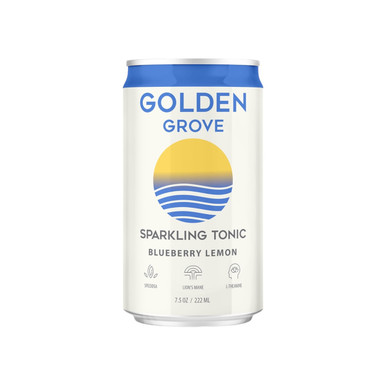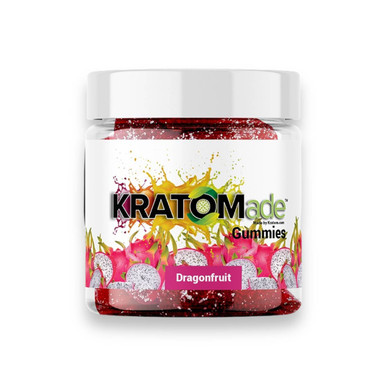
Navigating the World of Kratom: Insights on Its Effects, Benefits, and Risks
Kratom: Unveiling the Enigma
Welcome to the world of Kratom, a tropical tree native to Southeast Asia with leaves that possess compounds carrying mind-altering outcomes. In its native region, local cultures have used Kratom for centuries both with stimulant and a relaxant effects.
Demystifying Kratom: How Is It Perceived Globally?
Though originating in Southeast Asia, it has branched out to curious experimenters worldwide. The popularity of Kratom varies from region to region. In parts of the globe where its use is indigenous, it carries a symbolism entwined deeply with their cultures. However, in areas where Kratom use is more recent, attitudes can range from intrigued curiosity to fearful apprehension.
A Deeper Dive into the Origin and Habitat of Kratom
The Mitragyna speciosa plant, colloquially known as Kratom, hails from the coffee family. This evergreen tree took root in the fertile, tropical regions of Southeast Asia, primarily found in Thailand, Malaysia, and Indonesia. Its expansion to other regions has been primarily driven by trade and its attraction as a natural alternative for pain, stress relief, and mood enhancement.
Hush Kratom Nano Extract Shot 10mL

$12.95
Featuring a new cutting-edge way to consume your kratom! Only $14.38 Our Hush Kratom Nano Kratom Shot utilizes the power of nano-technology to enhance the...… read more
Stepping back into History: Traditional Use of Kratom
Long before the internet-charged debate on the effect, benefits, and risks of Kratom kicked off, this plant had a significant place in traditional medicine in its native countries. Used as a therapeutic tool and a mild stimulant, native cultures often chewed Kratom leaves or brewed them into teas. The alkaloids present in the leaves encouraged a state of alertness and energy, beneficial for day-long physical toil in these regions.
An interesting anecdotal use of Kratom in its native countries is in social and ceremonial rituals. The plant was administered to guests and used in rites of passage ceremonies. Besides these, Kratom has also been historically used to treat maladies like diarrhea, muscle cramps, and chronic pain.
Transition from Tradition: Kratom in Contemporary Times
While Kratom's traditional uses have persisted over time, the manner in which it is consumed has evolved significantly due to advancements in extracting and refining techniques. Today, Kratom is available in the form of dried leaves, powders, capsules, and extracts, making it much more accessible to the global populace.
As Kratom's popularity has spread, the reasons for its use have also diversified. Some use it for its calming and mood-lifting responses, whereas others are interested in its potential as a natural analgesic. However, with these new uses, new concerns have also arisen regarding its safety and potential side effect. Therefore, whether you are considering Kratom for its euphoric qualities or aiming for more focus and energy, it's crucial to remember to approach it with proper knowledge and caution.
Physical and Psychological Effects of Kratom: From Euphoria to Pain Relief
Ingesting Kratom can lead to a plethora of effects, both positive and negative, which are driven by two primary alkaloids: Mitragynine and 7-hydroxymitragynine. These chemical compounds interact with the body’s opioid receptors to induce various responses. From feelings of euphoria to a more relaxed state and effective pain mitigation, Kratom acts on multiple fronts.
Euphoria
Kratom, especially in higher doses, often induces a euphoric state. The compound 7-hydroxymitragynine, which is more potent than morphine, stimulates the brain's reward system, leading to the release of dopamine. This process is similar to how many opioids and even certain stimulants induce pleasure and reward.
However, the euphoria from Kratom is typically less intense than that experienced from stronger opioids or stimulants. Regular users often describe the sensation as a mild state of pleasure and well-being. Kratom's overall effect, in terms of euphoria, can best be compared to a mild opioid or a robust cup of coffee, balancing stimulation with relaxation.
Calmness
Unlike traditional stimulants, Kratom does not lead to restlessness or jittery feelings. Instead, it often induces a state of calmness. Users report a "soothing effect," with feelings of tranquility, serenity, and peace.
Its effect is somewhat similar to agents like chamomile or lavender, renowned for their calming properties. However, the action of Kratom goes a level deeper by working directly with the central nervous system.
Pain relief
Kratom's potential as a pain reliever has been one of its most celebrated attributes. Once again, the impact is thanks to the alkaloids mitragynine and 7-hydroxymitragynine, which interact with the body’s opioid receptors, mitigating pain perception.
Many users compare Kratom's analgesic effects to over-the-counter pain relievers, with some claiming that it may be comparable to mild prescription painkillers. While this may be subjective, it underscores Kratom's potential role in managing discomfort.
Scientific evidence of these effects
While anecdotal accounts of Kratom's effects are widespread, scientific research is still catching up. A study from the UBM Journal of Ethnopharmacology suggests that mitragynine acts on the body's μ-opioid receptors to produce analgesic and anti-inflammatory effects. However, the nuanced effect of alkaloids on mood upliftment and calmness needs more exploration.
Scientific opinion remains divided, partially due to the variable nature of Kratom's effects, which can differ based on the user's physiology, the strain of the Kratom, and the dosage. As Kratom continues to rise in popularity, more research is needed to fully understand its potential benefits and drawbacks.
Golden Grove kratom Extract Beverages Blueberry Lemon Sparkling Tonic 7.5oz

$9.95
Golden Grove kratom Extract Beverages Blueberry Lemon Sparkling Tonic 7.5oz Introducing Golden Grove's Kratom Extract Beverages, presenting the delightful Blueberry Lemon Sparkling Tonic in a...… read more
Negative Impact: From Itchiness to Nausea and Beyond
No discussion about Kratom would be complete without considering the potential downsides. Like many substances that affect the human body and mind, Kratom can have unwanted side effects.
Overviews of Mild Side Effects
Users have reported a range of mild side effects from Kratom use. While they're usually not severe, being aware of them can help mitigate their impact.
Dizziness
Dizziness is a common complain among Kratom users, especially those who are new to it or who take high doses. The primary alkaloid in Kratom, Mitragynine, interacts with opioid receptors in the brain, and too much of it can overwhelm these receptors and lead to dizziness and disorientation.
To avoid feeling dizzy, start with a low dose of Kratom and gradually increase it. Keep hydrated and avoid using Kratom on an empty stomach. Moreover, always consume in a safe environment, where you can sit or lie down if you feel dizzy.
Nausea
Kratom can cause nausea due to its unfamiliar taste, or because of how it stimulates certain receptors in the brain. Sometimes, consuming Kratom on an empty stomach can also trigger nausea.
To reduce the chances of nausea, you can mask the taste of Kratom by taking it with flavorful drinks or food. More importantly, always follow the principle of “less is more” when dosing Kratom to avoid overwhelming your system.
Fatigue
While some people use Kratom for its energy-boosting properties, at higher doses it can have a sedative effect, leading to feelings of tiredness or fatigue. Kratom can also interfere with sleep patterns if consumed in large doses or late in the evening.
To avoid fatigue, use Kratom in moderate doses, ideally earlier in the day. Establishing a regular sleep schedule and maintaining physical activity can also help mitigate feelings of tiredness.
Discussion on Severe Side Effects and Risks
Although less common, heavier or prolonged use of Kratom can lead to more severe side effects. These might include dependency, an increased tolerance to the plant’s effects, and withdrawal syndrome, similar to opioids. Withdrawal symptoms can include muscle aches, insomnia, irritability, and aggression. In rare cases, severe respiratory depression can occur with large doses.
Risks of Kratom usage can be exacerbated by combined use with other substances such as alcohol or prescription drugs, or by pre-existing medical conditions. The adverse effects of Kratom are yet not fully understood, and therefore it's crucial to treat it with respect, start with low doses, and avoid combining it with other substances.
Remember, Kratom is not regulated by the FDA, so the safety and purity of products can vary. Always buy from reputable vendors to ensure you are getting quality Kratom.
Different types of Kratom are labeled as strains, but the more accurate term would be "vein type" referring to the color of the veins on the leaf. The general belief is that the vein's color is determined by the tree's maturity and the environmental conditions under which it grows. Red, white, and green vein Kratom are the most well-known types. These strains differ in their chemical composition, providing unique sets of effects and potential side effects.
Red Vein Kratom
Unique Benefits
Red Vein Kratom, recognized for its dark reddish color, is considered one of the most popular vein types. Mellow effects primarily characterize it, and it's known for providing a comforting sensation, like a warm blanket. Red Vein is also heralded for its pain-relieving abilities due to high concentrations of the alkaloid, 7-hydroxymitragynine. It often works as a natural alternative for over-the-counter and prescription pain relief.
Potential Side Effects
Overconsumption of Red Vein Kratom can lead to side effects such as constipation, sweating, itchiness, and in severe cases, hallucinations. Like any other Kratom type, red vein can induce dependency and withdrawal symptoms over time if consumed in high doses regularly.
White Vein Kratom
Unique Benefits
White Vein Kratom, with its distinctive white or beige coloration, is often associated with its energizing and euphoric effects. Some users describe it as coffee-like, providing a boost in energy, mood enhancement, and heightened focus. Those who employ it often use it as a tool for enhancing productivity.
Potential Side Effects
However, caution is advocated with White Vein Kratom as its potent stimulating properties can lead to jitteriness, restlessness, and insomnia, especially when overconsumed. Regular high-dose usage can lead to tolerance and dependency, with withdrawal symptoms manifesting during abstinence.
Green Vein Kratom
Unique Benefits
Green Vein Kratom, identifiable by its greenish hue, is often regarded as the middle ground between Red and White Vein. It provides a balance of both energizing and calming effects, a feeling of peaceful alertness without undue sedation or stimulation, making it suitable for those seeking a moderate experience.
Potential Side Effects
Like the other strains, Green Vein's side effects tend to be dose-dependent. While lower doses may cause mild side effects like nausea and dizziness, ongoing high-dose usage can give rise to more severe effects including dependency and withdrawal syndrome.
Kratomade Gummies Dragon Fruit 8ct

$12.79
Kratomade Gummies Dragon Fruit 8ct Introducing Kratomade Gummies Dragon Fruit, a delightful fusion of premium kratom extract and the exotic essence of dragon fruit. Each...… read more
Kratom Dosing: An Important Aspect to Consider
When considering the use of Kratom, one critical factor must not be overlooked - dosage. The number of alkaloids, particularly mitragynine and 7-hydroxymitragynine ingested can have a substantial impact on the overall experience. As such, understanding the relationship between dosage and effects is vital.
Relationship Between Dosage and Effects
Differing Impacts Based on Dosage
Kratom, when taken at low doses, exhibits more stimulant-like effects, offering potential benefits such as increased energy, improved focus, and enhanced mood - quite similar to white vein Kratom's effects. However, in larger amounts, Kratom assumes opiate-like properties, inducing feelings of relaxation, pain relief and even feelings of euphoria, which are characteristic of the red vein Kratom. Crucially, an elevated dosage also increases the likelihood of experiencing potential side effects, which can range from mildly inconvenient to severe.
Factors Influencing Optimal Dosage
Identifying the optimal dose of Kratom is not a cut-and-dry process. It is influenced by a host of factors, including a person's body weight, overall tolerance to opioids, the specific vein color of the Kratom, the quality of the Kratom, and personal health problems or medication regimes. A responsible approach to Kratom use includes taking these factors into account.
Dosage Recommendations and Warnings
General Recommendations
Novice users should start with a low dose (1-2g) to evaluate their individual responses and gradually increase if needed. Regular Kratom consumers may consume from 3-5g, obtaining a balanced effect. However, doses above 5g are generally not recommended, as they may increase the risk of adverse effects.
Warnings for Specific Demographics or Conditions
Kratom consumption should be approached with caution for certain demographics, such as pregnant or breastfeeding women, individuals with liver disease, or those taking medications metabolized by the liver. Research suggests that long-term, heavy use of Kratom can cause hepatotoxicity. Excessive use may also lead to addiction, withdrawal symptoms, and other serious side effects. Always consult a health professional before incorporating Kratom into your routine, especially if you fall into one of these groups or have a pre-existing condition.
Kratom's benefits and risks have incited heated debates amongst health professionals, leading to ambivalent legal statuses around the world. A thorough understanding of Kratom's legality is crucial for those interested in its potential effects.
A. Kratom Legality in Various Regions
1. The United States
In the United States, the legality of Kratom varies depending on the state. Although Kratom is legal at a federal level, certain states have enacted laws and regulations against its use. For example, states like Alabama, Arkansas, Indiana, Vermont, and Wisconsin categorize Kratom as a Schedule I substance, making it illegal to buy, sell, or possess. However, in states such as California, Nevada, and Florida, Kratom is fully legal.
In other states, Kratom legality is slightly more convoluted. For example, in Tennessee, Kratom is legal for anyone over the age of 21, and in Illinois, it is legal but banned in the city of Jerseyville. This variation in legal status can make it challenging for consumers to navigate the rules around Kratom use.
2. Europe
The legality of Kratom in Europe is no less complex. While it is banned in countries such as Latvia, Lithuania, Poland, Romania, and Sweden, Kratom is legal in other countries including the UK, France, and Spain. However, regulations surrounding its sale, distribution, and consumption may vary, so it's essential for potential users to understand these before purchasing.
3. Asia
Ironically, despite its origin in Southeast Asia, Kratom is illegal in many countries in this region, including Thailand (though recently there has been some easing of restrictions), Malaysia, and Myanmar. However, in Indonesia, one of the largest exporters of Kratom, it remains legal. On the other hand, countries like South Korea and Japan have strict laws against Kratom use.
B. Predicting the Future of Kratom Legality
As Kratom's potential risks and benefits continue to be researched and debated, its legal status may change. In the United States, for example, the DEA has considered labeling Kratom as a Schedule I drug, a category that includes substances with no accepted medical use and a high potential for abuse. Conversely, proponents of Kratom argue for its therapeutic potential, urging a reconsideration of such harsh categorization. Likewise, in Europe and Asia, changes in legislation will likely be influenced by future research findings concerning Kratom's safeties and effectiveness.




